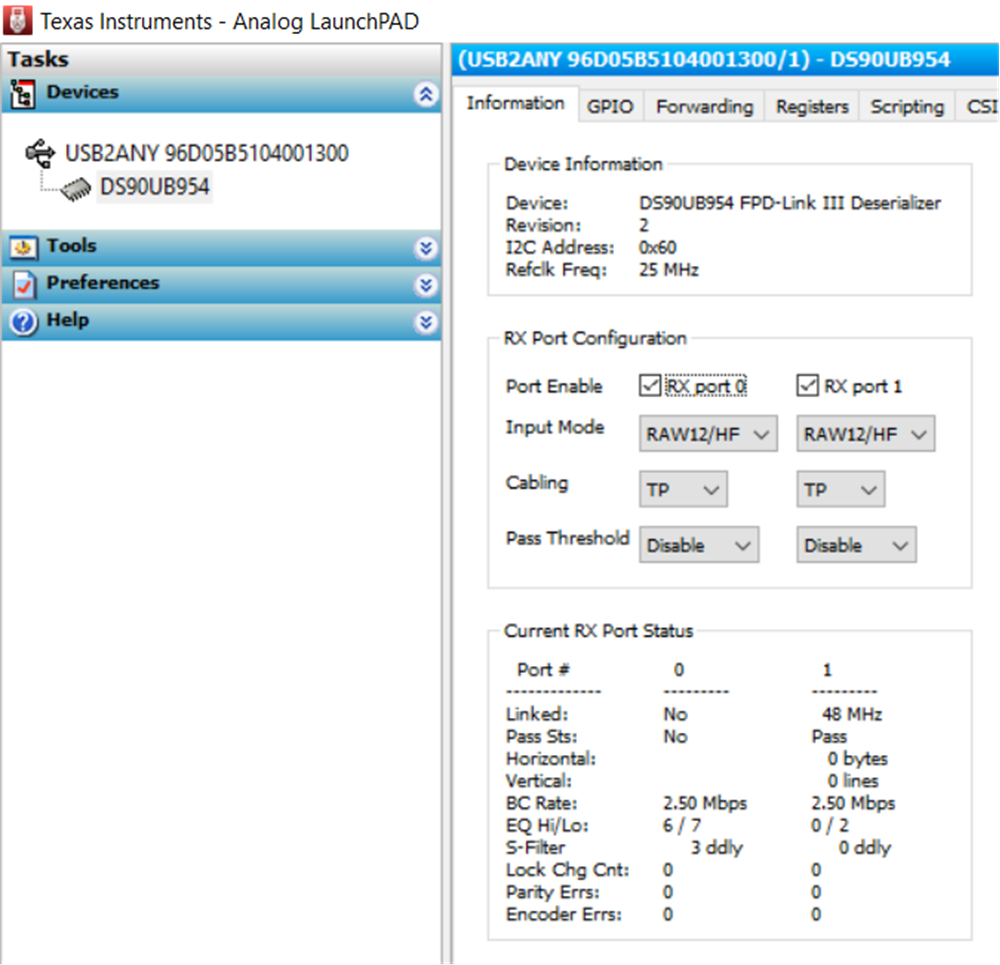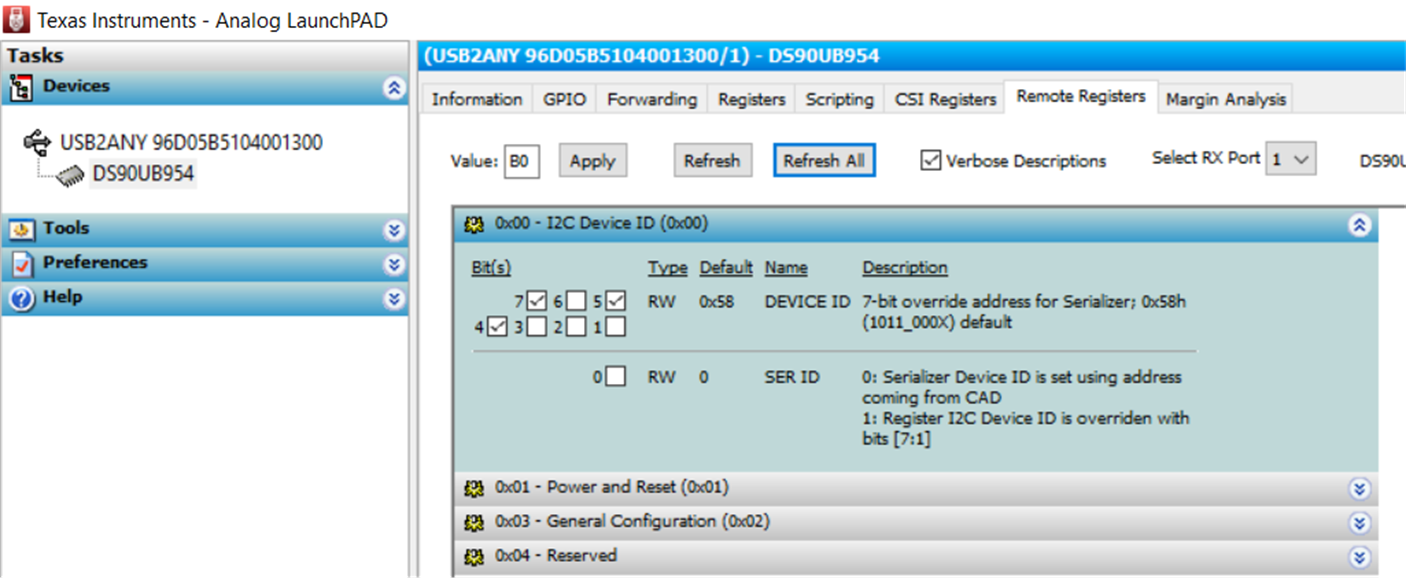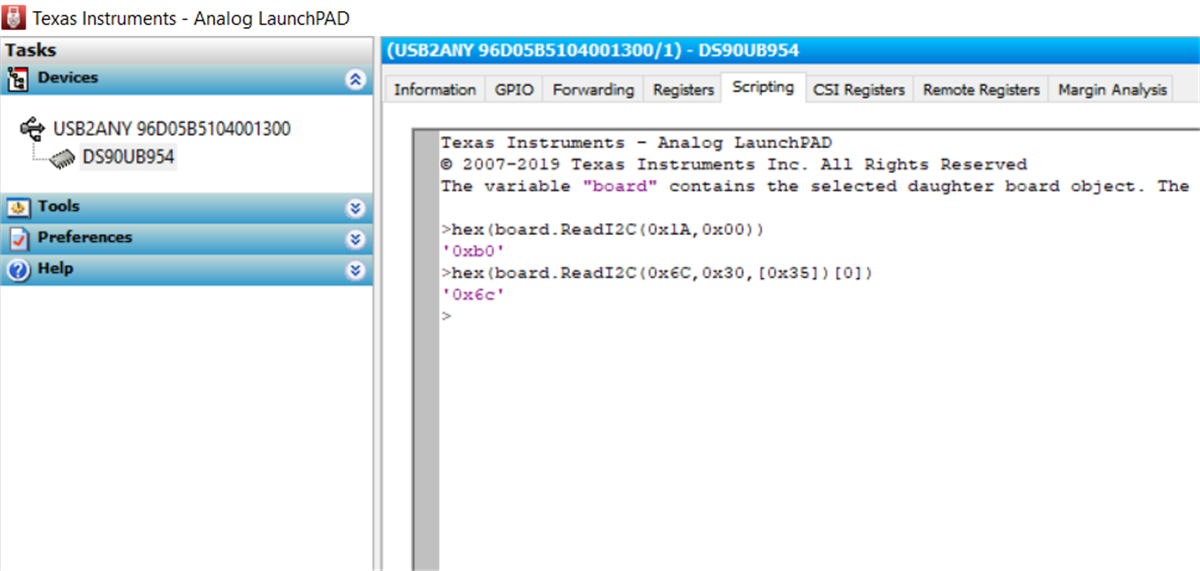TIDUBF0 January 2022
- Description
- Resources
- Features
- Applications
- 5
- 1System Description
- 2System Overview
- 3Hardware, Testing Requirements, and Test Results
- 4Design and Documentation Support
- 5Tools and Software
- 6Documentation Support
- 7Support Resources
- 8Trademarks
3.3.5 I2C Communications
I2C communication between the DS90UB954-Q1 EVM and OX01F10 imager over the FPD-Link III back channel can be confirmed with the Analog LaunchPad GUI. Figure 3-10 and Figure 3-11 show the established link with the serializer on RX port 1, and the corresponding register map.
 Figure 3-10 Analog LaunchPad™ Link Confirmation
Figure 3-10 Analog LaunchPad™ Link Confirmation Figure 3-11 Serializer Remote Registers
Figure 3-11 Serializer Remote RegistersRead and writes to the imager, at slave alias address 0x6C (7-bit), are confirmed with the built-in Python scripting window of the Analog LaunchPad. Register 0x3035 reads data 0x6C, which is the expected default value for the register.
 Figure 3-12 Back-Channel I2C Communication
Figure 3-12 Back-Channel I2C Communication